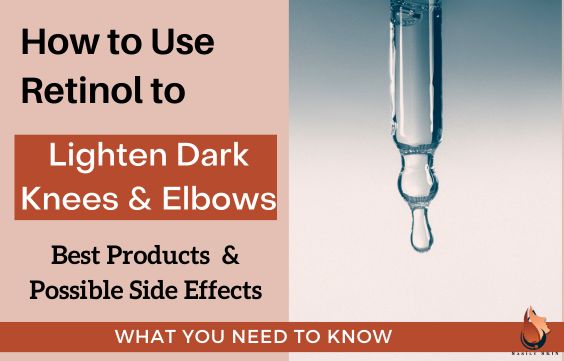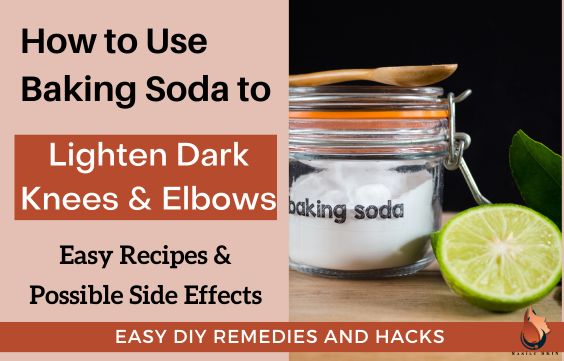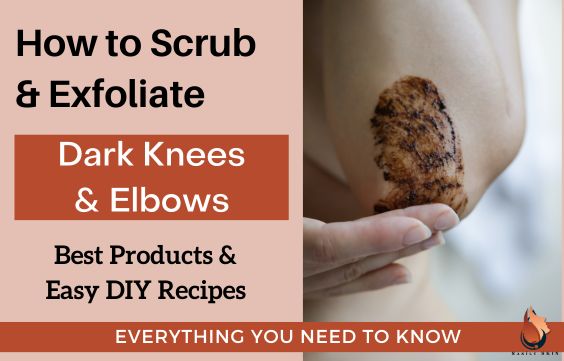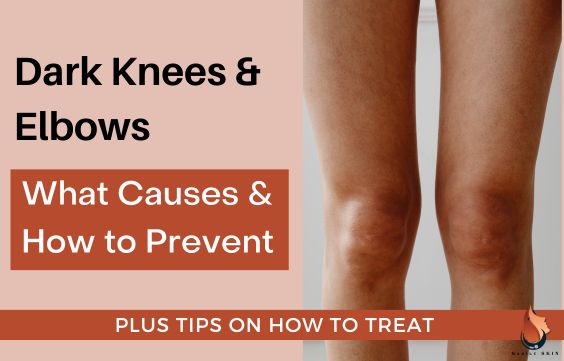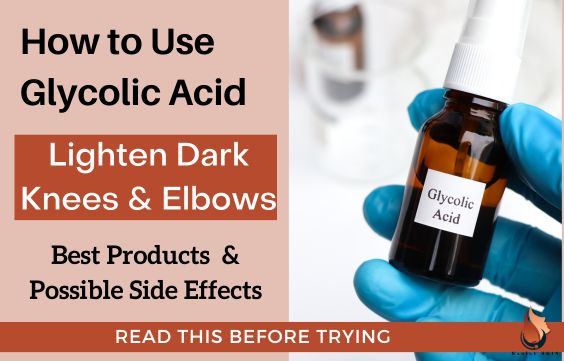A Guide to Using Hydroquinone for Dark Knees & Elbows
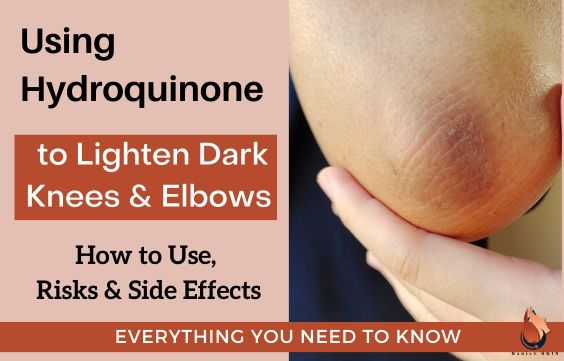
Doctors often prescribe hydroquinone for dark knees & elbows. This is because, in skincare, Hydroquinone is considered the gold standard for the treatment of hyperpigmentation.
This means that it is the most effective topical treatment available, especially for stubborn areas like the knees & elbows.
So in this article, we will talk about how hydroquinone works specifically for your knees & elbows, how to use it, and how you can get it.
How Hydroquinone Works For Dark Knees & Elbows
Hydroquinone is a skin-bleaching agent that works by directly inhibiting the production of melanin (pigment) in the skin.
According to science, its exact mechanism of action is that it inhibits the enzymatic conversion of tyrosine to DOPA (dihydroxyphenylalanine). The enzyme that hydroquinone affects to do this is tyrosinase.
This results in the desired chemical reduction of melanin. Constant inhibition leads to a decrease in the number of melanocytes and decreased transfer of melanin leading to lighter skin eventually.
The mechanism of action makes hydroquinone especially effective for patches of stubborn hyperpigmentation (like on your knees & elbows, melasma and other forms of post-inflammatory hyperpigmentation).
However, it is not without side effects.
Related Articles:
How to Use Lemon to Lighten Dark Knees & Elbows
What Causes Dark Knees & Elbows & How to Prevent
Side Effects of Hydroquinone
Regardless of where on the skin you use it, hydroquinone has side effects. However, they may be worse on different areas of skin that are more sensitive than others.
While the elbows & knees may not be as sensitive, they can still experience side effects. These may include:
- Irritation (most common)
- Allergic contact dermatitis
- Redness
- Inflammation
- Dry skin
- Stinging
- Rarely ochronosis – This is a blue-black or grey-blue discoloration; it is rare and more commonly seen in people who use a high concentration of hydroquinone for a long period on large areas of the body.
To manage these side effects, it is best to use hydroquinone under the guidance of your doctor in a suitable concentration and a routine that is best for your skin.
Related Articles:
How to Use Glycolic Acid to Lighten Dark Elbows & Knees
5 Best Creams to Lighten Dark Knees & Elbows
How To Use Hydroquinone For Dark Knees & Elbows
The first step to take before using hydroquinone is to consult your dermatologist or skincare professional. Hydroquinone is not approved by the FDA for OTC sale. It should only be prescribed by a doctor and the only FDA-approved Hydroquinone treatment is Tri-Luma.
If you find hydroquinone products on shelves for OTC purchase, then they are probably not tested and unsafe to use on your skin.
Having it prescribed by a doctor is the best way to determine if it is right for your skin and to develop a regimen that will work best for you. That is, by maximizing the effectiveness while minimizing the side effects.
After or during that consult, you will be advised on how to apply it and what concentration is best for your skin.
Related Articles:
How to use Baking Soda to Lighten Dark Knees & Elbows
How to Use Retinol to Lighten Dark Knees & Elbows
Best Scrubs & Exfoliators for Dark Knees & Elbows
Choosing The Right Concentration
Tri-Luma cream is usually available in 0.01%, 0.05% and 4% concentrations.
Most people generally start with the lowest concentration, but even that needs to be used cautiously.
About 35% to 45% of hydroquinone is absorbed systemically after topical use so keep this in mind if you have super sensitive skin.
Your doctor will look at your skin and decide what concentration you should start with.
Always patch-test your skin first.
How To Apply Hydroquinone To Your Knees & Elbows
- Hydroquinone should be applied on your skin only (topically).
- Apply a thin layer onto clean skin. If you have sensitive skin, you can apply it over a simple moisturizer or hyaluronic acid serum. But avoid moisturizers that have acids, active, or irritating ingredients. These can cause irritation when used with hydroquinone. Click here to read all about How to Moisturize with Hydroquinone & The Best Ones To Use
- To see results, you will need to apply it 1 to 2 times a day for 3 to 6 months. If you do not see results in 6 months, then you should stop using hydroquinone and consider different alternatives.
- When using hydroquinone, you will also need to use a good, broad-spectrum SPF. You will need to protect your skin from the sun at all times. This is especially important if you are wearing shorts or going to the beach or out of the house a lot.
How long will hydroquinone take to work?
You should start seeing results within two weeks of consistent Hydroquinone use. However, this can take up to 4-6 weeks depending on how bad your hyperpigmentation is.
If you do not see any results at all within 3-6 months, then you should not continue the treatment.
Results will vary for every individual.
Disclaimer
Hydroquinone, while effective, might not be the best treatment for everyone. I strongly recommend consulting a doctor before trying this.
And even so, expect that you may experience side effects and different progression of results. These things generally vary for everyone based on skin type, skin condition, causes, daily habits, allergies, sensitivity, etc.
And ALWAYS remember to do patch tests.


